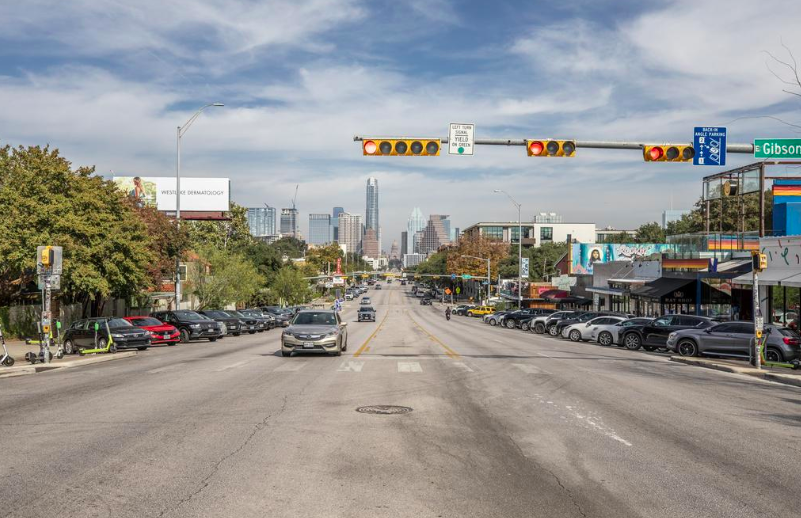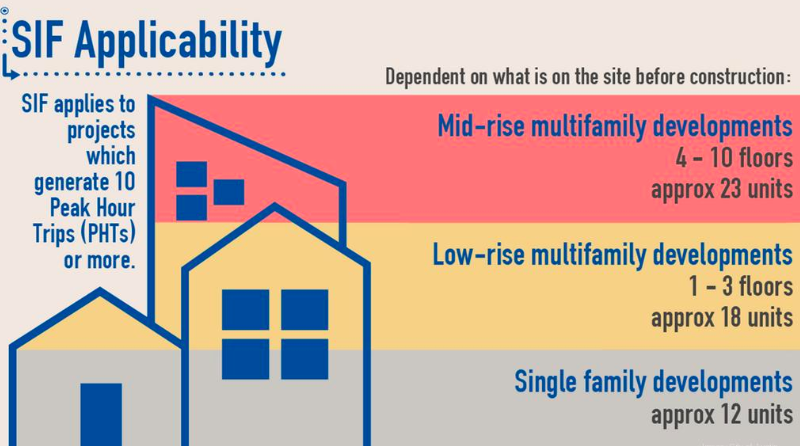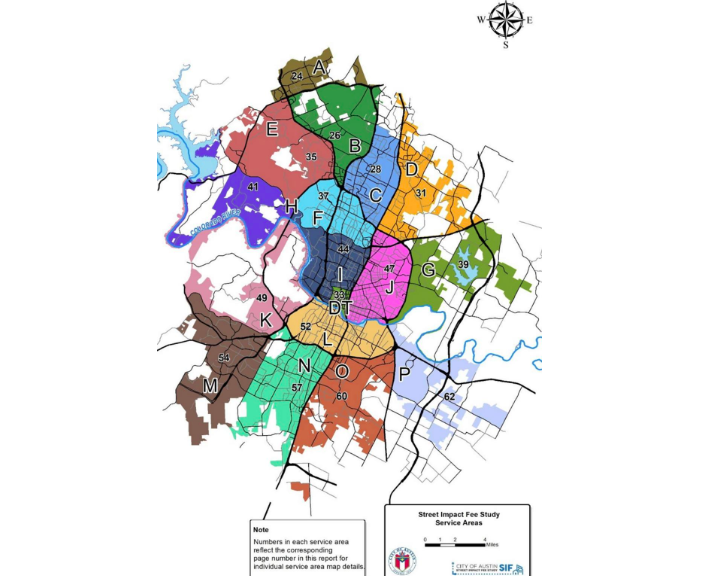Starting later this month, developers in Austin will be charged a one-time street impact fee that will fund transportation infrastructure initiatives, bringing to fruition a long-term City Hall plan.
Collections begin June 22 and will support transportation-related projects including new roads, traffic signals and bike and pedestrian lanes.
Most sizes of projects will have to pay the fee, but the rate can be reduced under certain conditions, such as if affordable housing is included. The fees will be calculated by determining the traffic the project would create during peak afternoon hours, and can vary greatly depending on building type and location.

For example, a new 10,000-square-foot general office space in North Austin would be charged a fee of about $47,000 while a new medical clinic of the same size located in the southeast portion of the city would be charged a fee of about $134,000.
The collection rate is set at $850 per vehicle mile created for residential development and $1,215 per vehicle mile for commercial development.
“Under this program, developments will need to pay their fair and equitable share toward mobility infrastructure to accommodate growth and new developments,” said Upal Barua, development officer for Austin Transportation Department. “Developments will need to pay a fee based on the land use, intensity and location of the developments. The fees collected under this program will help fund roadway capacity projects necessitated by new development.”
Barua pointed out that cities such as Fort Worth, Round Rock and New Braunfels have street impact fee programs: “The primary goal of street impact fees is to more rapidly and holistically address the impact growth and development have on our transportation system. Additionally, using funds from new development to add capacity to our street network will reduce the demand on tax dollars to fund these necessary improvements through bond elections.”
Traffic and mobility comprise one of the largest quality of life issues in Austin. And while developers are never happy about new fees, the street impact fees could simplify the traffic impact analysis process and provide more clarity upfront about how the fees will figure into final project costs.
Fee calculations
The fees start for any development that is deemed to generate at least 10 “peak hour trips.” The city says that equates to about 12 single-family homes on a site, 18 residential units in a low-rise development or 23 units in a mid-rise development. Smaller residential projects and affordable housing projects would not trigger the fees.

“Note those are estimates, and individual zoning categories may affect those trigger points,” said Jack Flagler, senior public information specialist with Austin Transportation. “Developers pay this fee to offset the impacts from new trips to and from new developments. The fee will help the City keep pace with growth, ensuring new development accounts for its fair share of infrastructure costs.
“It strikes the right balance to distribute costs in the community while providing a more predictable cost for developers.”
The city has identified 17 service areas across Austin, and the funds collected within those sections must go toward transportation improvements in the same areas.

The street impact fees replace what were called mitigation fees.
Developers still have the option to implement transportation improvements approved by Austin Transportation. Historically, these were provided by developers of large-scale projects that triggered a traffic impact analysis. Developers who implement those improvements are eligible to have their fees lowered.
“This system will bring a lot more clarity for developers,” said Jeff Stensland, senior public information officer for Austin Transportation.
He said the fee structure, which is scheduled to be reviewed every five to 10 years, is designed to ensure the city has a clear and equitable means to fund the infrastructure needed to support Austin’s growth.
How fees will be spent
The Street Impact Fee Roadway Capacity Plan has identified more than 1,100 transportation projects that could benefit from SIF funds. City staffers have developed evaluation criteria to prioritize projects in each service area, representing nearly $3 billion in needed improvements across the city.
The fees cannot go toward public transit, like the Project Connect system expansion, because of state law.
Street impact fees have been under development since 2015 and City Council approved their creation in December 2020, based on the results of a street impact fee study.
“During the 18-month grace period that followed, we’ve engaged with developers to help them learn more about this fee,” Flagler said.
Like communities across the nation, taxpayers in Austin often carry the burden of paying for road improvements. Over the past 10 years, $1.1 billion in general obligation bonds have been approved for transportation and mobility improvements, according to city documents.
Robert Spillar, director of Austin Transportation, said the new fees will allow the city to dedicate its bond money to other long-term issues such as housing insecurity, and free up additional funds within the department itself.
He previously described the new fee program as “a step forward for the city.”
“Every time I’ve been involved in a bond program, there’s never enough money to do everything,” Spillar said. “If we can step back from that need a little bit and give other departments or other subject areas an opportunity, it’s better for the city (and taxpayers).”
The Article is from Austin Business Journal, copyright belongs to owner


